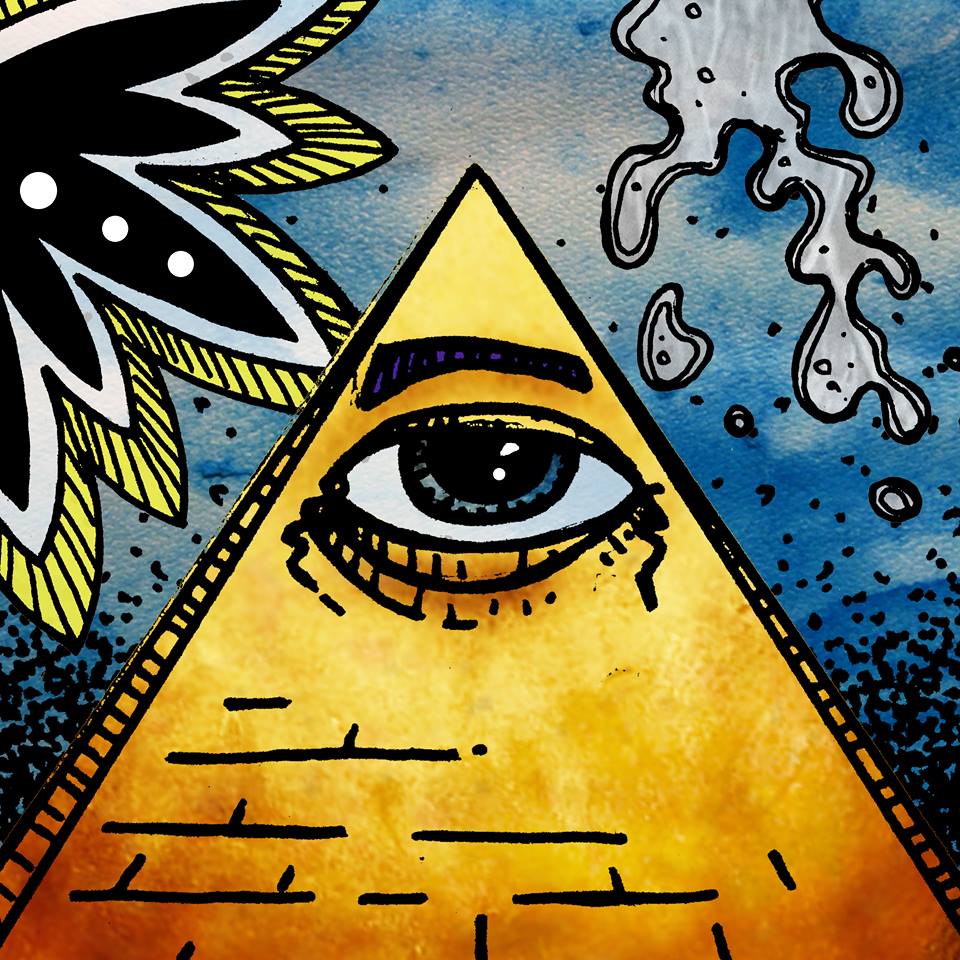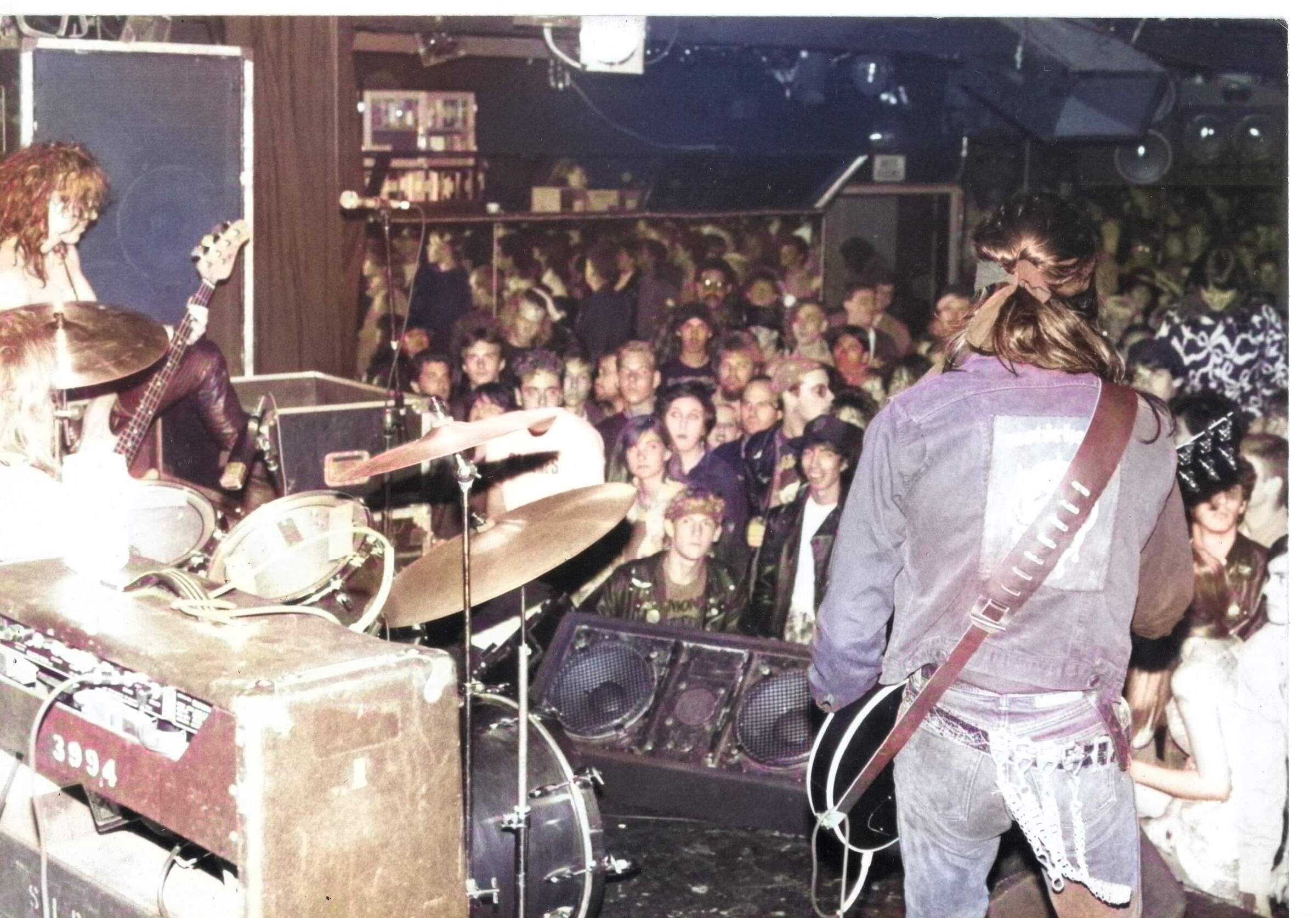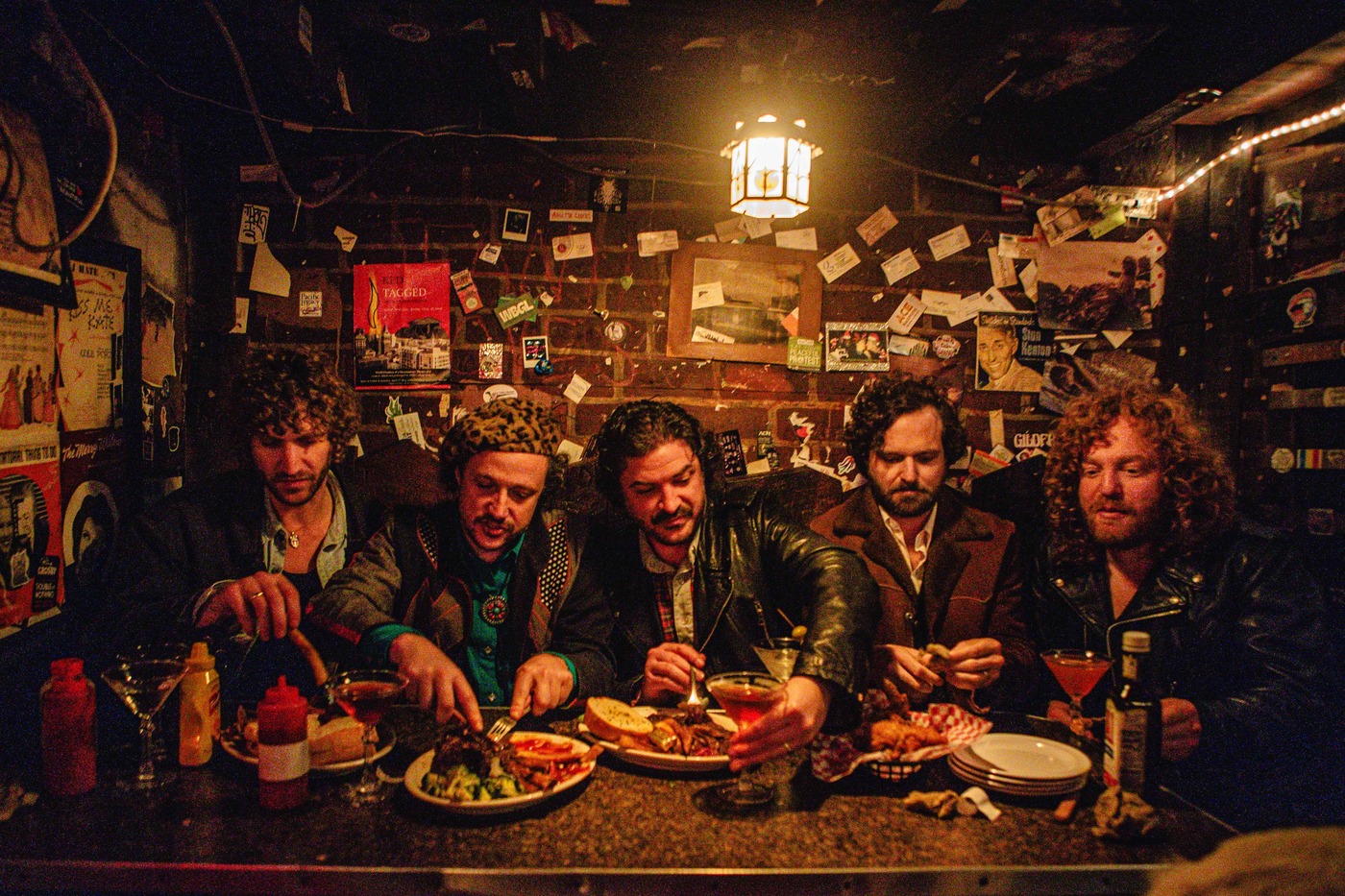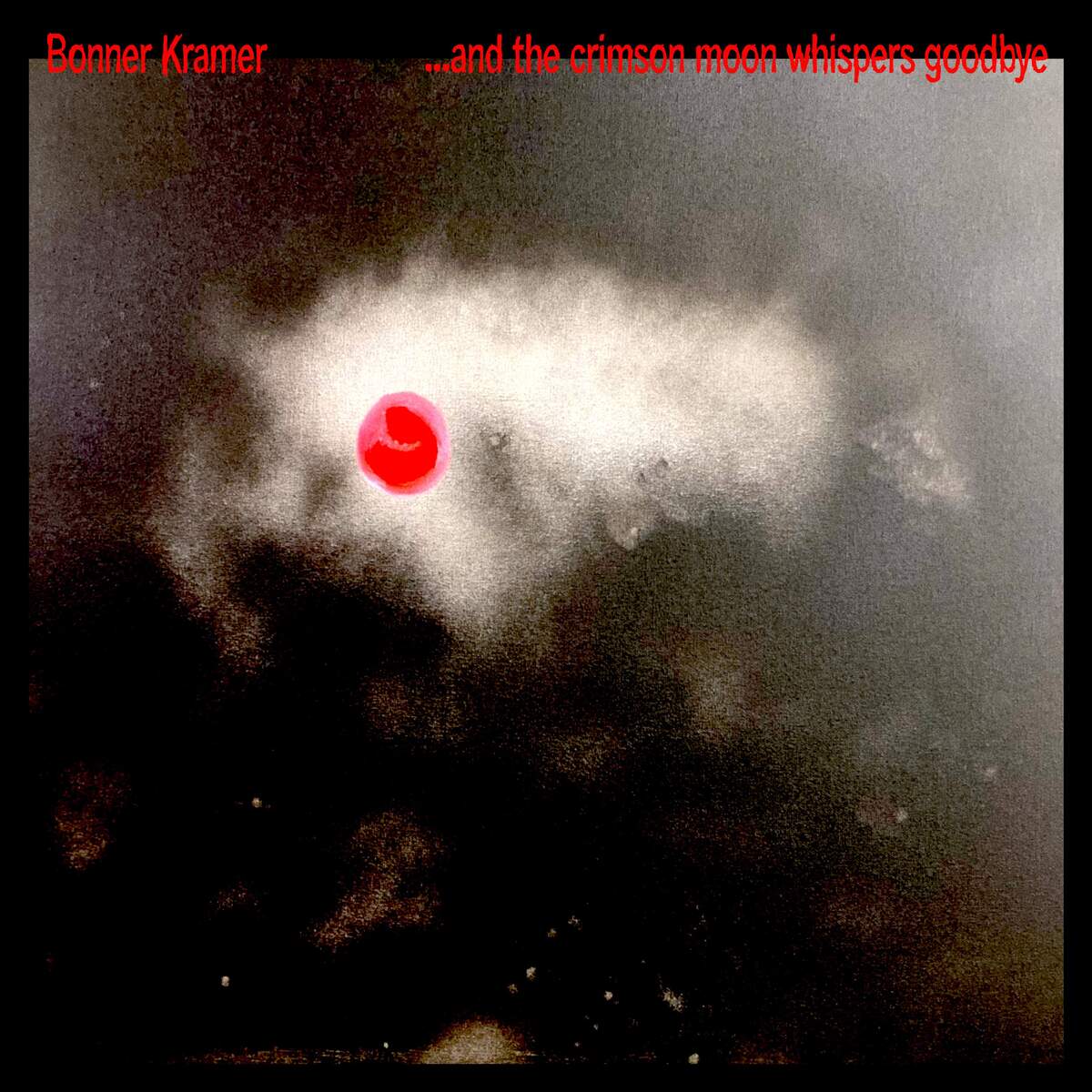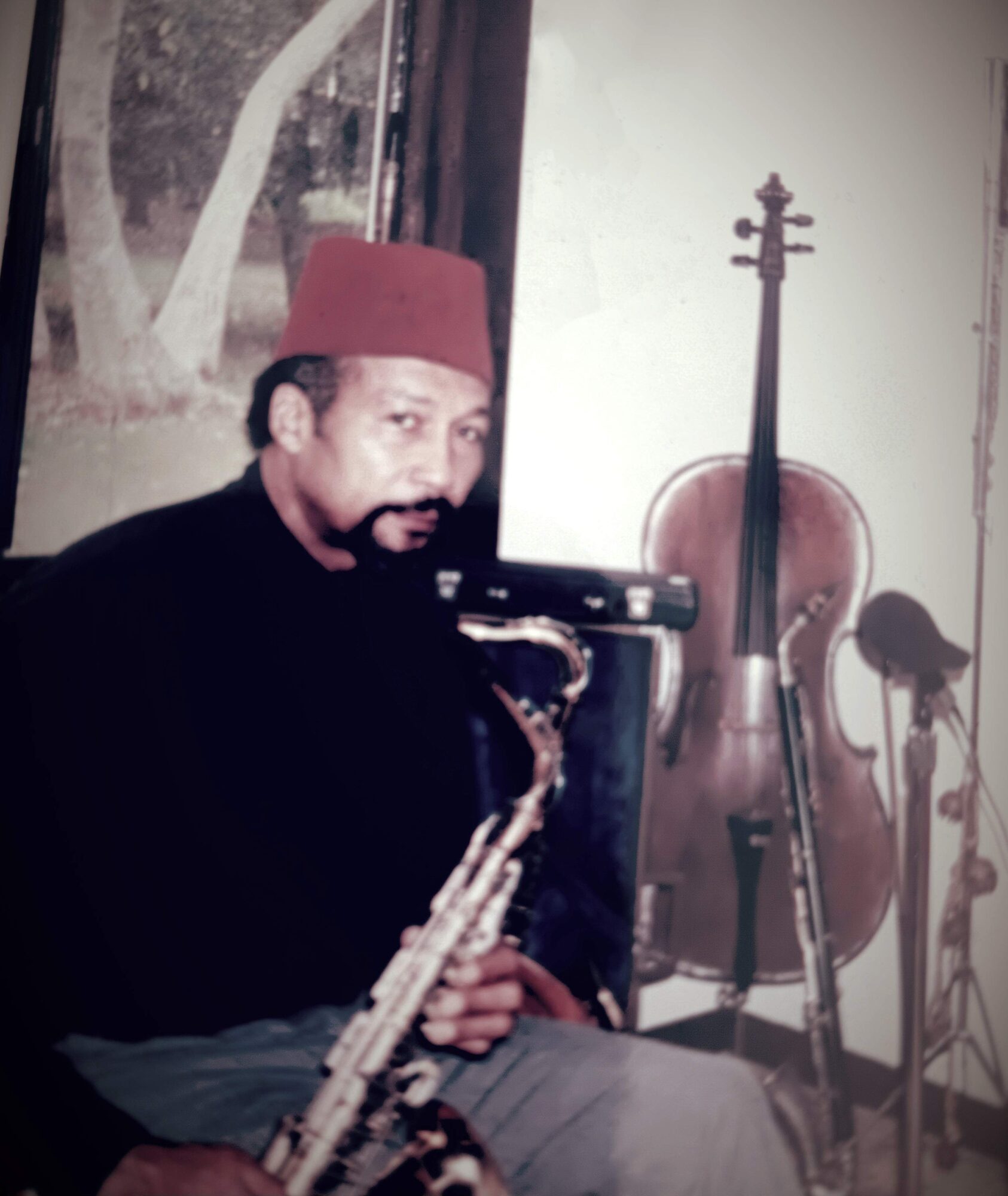Sea Hags: The Lost 1986 Tapes
The Sea Hags emerged from the ferment of San Francisco’s mid-1980s underground, quickly becoming a potent force at the messy, thrilling intersection of punk rock, hard rock, and the nascent sounds of alt-rock.
The band’s core was a relentless machine: the unstoppable drumming of Greg Langston powering the sound, alongside Ron Yocom on vocals and Chris Schlosshardt on bass. They took the high-velocity energy of early punk rock and shape it into something distinctly their own.
Their formal entry into the world was their sole LP, released by Chrysalis in 1989. However, the band’s true spirit is best captured earlier. From their first live show on May 1, 1985, the trio immediately proved their mettle. By 1986, they were a fixture on the scene, routinely opening for a dizzying array of acts including the Dead Kennedys, Social Distortion, Circle Jerks, X, Suicidal Tendencies, Sonic Youth, Soundgarden, Primus, and even Motörhead.
The band’s first six-track demo, produced by renowned producer/engineer Sylvia Massy and Metallica guitarist Kirk Hammett (who played on two tracks), quickly sold out. By September 1986, Langston estimated the band had played “60 or 70 shows, at least.” This gruelling schedule meant the Sea Hags were an intensely tight unit when they scheduled a live recording session, with Massy again at the helm, at CD Studios.
This authentic document has now been issued as ‘Dead And Gone’ on Liberation Hall, offering a vital snapshot of that period. Recorded in front of an invited audience of about 60 fans, the album captures the organic power of the Sea Hags’ original trio, untainted by the additional studio musicians that featured in later recordings.
It is this period, before the interventions, that defined the band’s brilliance. The label’s eventual insistence on line-up changes, including swapping drummers and adding members, inevitably fractured the unique chemistry that made their live performances so exciting. ‘Dead And Gone’ is the sound of the Sea Hags at their peak, an essential record of an explosive band before the industry meddled with their magic.
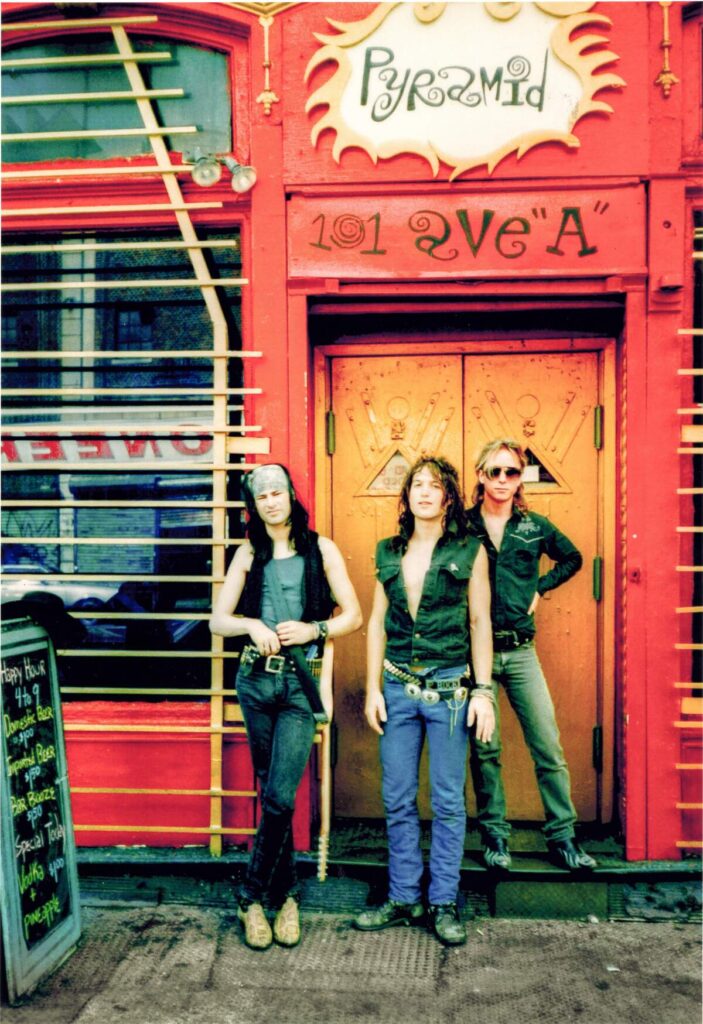
“San Francisco was fertile ground for wild experimentation and there was an ‘anything goes’ attitude for better or worse.”
Let’s start at the very beginning. You were one of the early members of Sleepers back in 1978, right in the middle of that first San Francisco punk explosion. Now the press release says you’re recording with the reformed Sleepers A.D. What’s it like jumping back into that world after all these years? Are you trying to channel the late ’70s punk energy again, or is this more of a whole new creative chapter? And what sparked the reunion in the first place — why now, and why new material?
Greg Lanston: The Sleepers were in a class unto themselves. This was due to a combination of things. Ricky Williams (died 1992) was a very charismatic, crazed singer. He could be absolutely amazing on stage, or a complete, drugged-out mess. Michael Belfer (died 2022) was one of my all-time favorite guitarists. He was a master of the EBow, a device which sits against the guitar strings and creates a quivering, haunting blend of notes.
What separated The Sleepers from other punk bands of the day was their music. Especially from 1978 to 1980, San Francisco was fertile ground for wild experimentation and there was an “anything goes” attitude for better or worse. Sleepers played fast or slow, or changed tempo mid-song, and it was all tied together by the crazed vocals, haunting guitar, and the solid rhythm section.
To be clear, I was not a founding member nor did I ever play with the original lineup of The Sleepers. Instead, I crossed paths with Michael Belfer when we worked together in Tuxedomoon, performing shows with him in New York and beyond in 1979. We also played together in another post-Sleepers band called Firesports. That was in 1984.
Currently, I’m playing with Sleepers A.D., alongside the only surviving member from the original group, Paul Draper. Paul took care of business for the original band and kept things moving forward, which included putting together a fantastic E.P. on his own Win Records.
The current band has a full LP recorded, which is a mix of old and new material. The new songs have a connection to Michael Belfer as well, since our guitarist Elliott Shannonhouse co-wrote and performed with him.
I would love it if you could discuss some of the early days — tell us about the local scene, the hangout places, and the first gigs you attended that really influenced you later on.
I just happened to be at the right age at the right time. I was able to see punk rock start from the beginning. Before Dead Kennedys, Avengers, Flipper, and Crime, there was Killerwatt, Magister Ludi, and Hoi Polloi. When Crime and The Nuns formed, other bands took notice. Then the Ramones came to town. Everything changed so fast. Bands formed, released a record, broke up, and moved on. I was hungry for new sounds. My first group (aside from teenage bands) was the experimental band Tuxedomoon, in 1979. At 19 years old, I was in a popular, headlining band. What a time!
I still feel very lucky these days. So many of my favorite bands from the initial first wave of punk rock are still around, and now I get to drum with them! Liberation Hall Records has put out archival releases from two of these bands, No Alternative and The Mutants. Over the past few years, I’ve sat in with The Mutants when their original drummer has been unavailable. It’s an honor to perform with a band that was so important to the early scene, and that I have seen so many times over the years.
I have also played with newer versions of The Offs, Fang, (Not) Flipper, and now I’m playing with Microwave Buddha, which is a new version of the synth-punk band Los Microwaves.
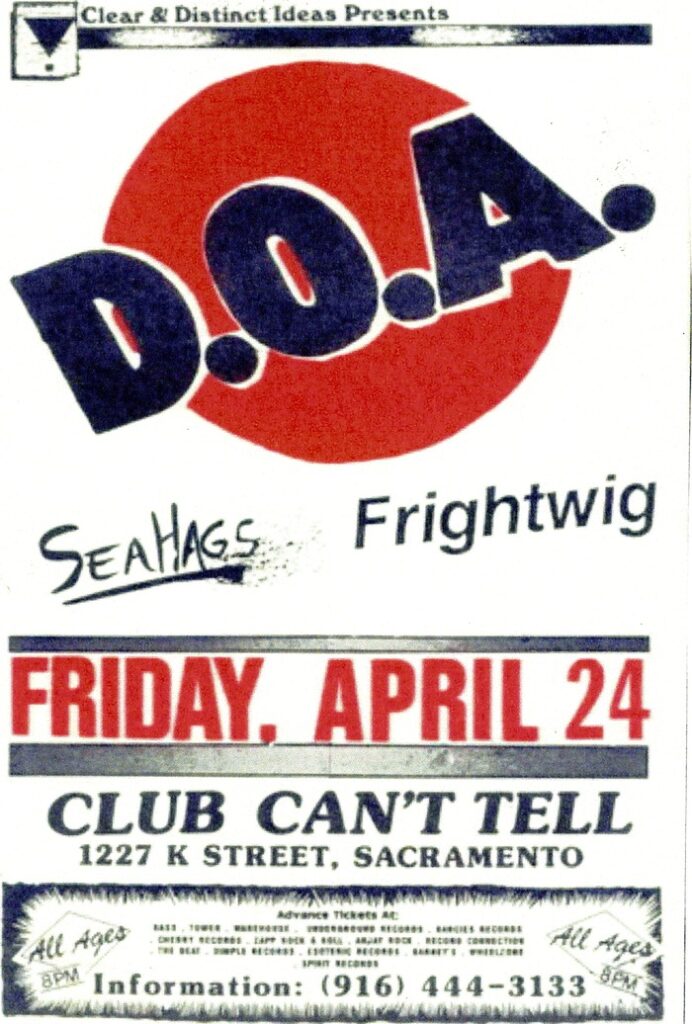
After Sleepers, you made a big turn into Tuxedomoon territory. That’s a major shift from punk to avant-garde/new wave. How did that connection happen? And what was it like moving between those two completely different musical universes? Did you have to rethink your drumming style, or was there some common DNA in the way you approached both?
I played with Tuxedomoon in 1979, and at that point they had been performing for about a year. I was familiar with their first 7” single (‘Joeboy/Pinheads on the Move’) and 12″ EP (the classic ‘No Tears’) when I auditioned — I could play six of their songs perfectly. But I didn’t last long. The band members were all several years older than me, and much more experienced with performing and life in general.
I was still perfecting my craft, so when I made mistakes, it was not good. However, during my time with them we recorded their second single, ‘Stranger,’ backed with ‘Love/No Hope.’ I also play on the Tuxedomoon tracks featured on the compilation ‘Can You Hear Me? Live at the Deaf Club,’ plus the tracks on the ‘Live at Max’s Kansas City’ EP and the ‘Pinheads on the Move’ LP. I was asked to leave after a wonderful tour that took us to New York and beyond, and I was replaced by a rhythm machine. I was crushed but remained a fan. When they released ‘Half-Mute’ (1980), I finally understood the direction they were heading.
I am still in contact with Blaine Reininger, and I see Winston Tong whenever he performs. Peter Principle passed away a few years ago. I could always recognize the feel of his fingers on the bass strings. I have no contact with Steven Brown.
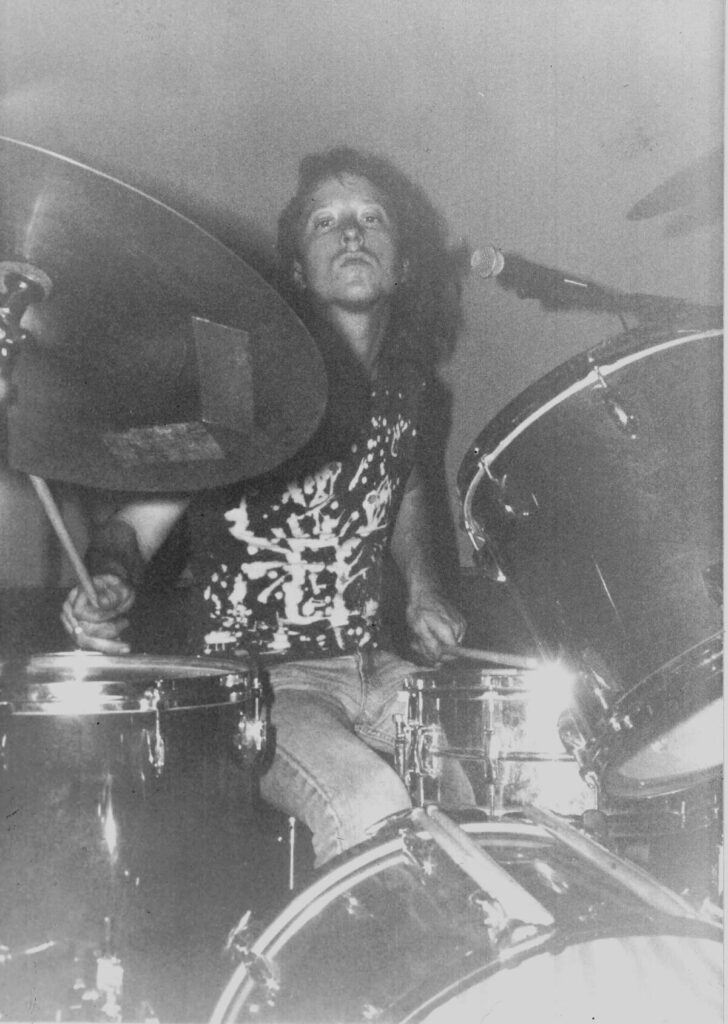
Speaking of big shifts, let’s talk about Beast, the band you did with Bryan Gregory from The Cramps. The Cramps had such a unique sound. What was Bryan like to collaborate with? Was his creative process as “out there” as his stage persona, and how did that vibe carry over into Beast?
I used to see the members of Beast in the elevator up to the practice studio. Woah!! This band is wild! And that’s Bryan Gregory! From The Cramps! I was a huge Cramps fan.
They were always completely dressed up, even for band practice. Bryan would be wearing tight gold pants, barefoot or in Egyptian sandals, shirtless, and maybe with a large snake around his neck. The rest of the band was in similar apparel, pre-goth style.
I stepped into the position when the drummer, Brian MacLeod (who had also been in The Sleepers), left. My hair got bleached white, and I started wearing makeup… all the time.
Bryan was a master of noise guitar, but in Beast he took a secondary role as far as the music was concerned. But on stage, he was larger than life. I played on two of the three singles; the third was produced by Allen Lanier of Blue Öyster Cult.
We fell apart in England when things were not going well. Bryan had been replaced, and the keyboard player was getting into hard drugs. I came home and finished up my last year at San Francisco State University, and I earned my degree in industrial design. The remaining members carried on as The Veil, and they put out an LP which included a few Beast songs.
Jumping forward a bit, let’s talk about your time in Sea Hags. You were already a “scene veteran” by then, after playing with Tuxedomoon, No Alternative, and Beast. You kind of straddled that line between the punk/new wave scene and the emerging hard rock world. What do you remember about that period? Did you feel like you were bringing some punk influences into the harder rock side of things?
1985 was still a prime time for punk and post-punk, but many other influences were creeping in. I was always learning about music from the past. For example, Rank and File (ex-Dils, Nuns) taught us punk rockers about country music. The Offs brought in their reggae influences. Death Rock was getting big as well (it wasn’t called “goth” yet). After Beast fell apart in England, I joined Fade to Black. This was a natural progression for me since they had a similar sound to Beast and were close friends.
When I joined Sea Hags, I was still with Fade to Black. Sea Hags got popular fast! I stuck with them and left FTB. The hard rock sounds of the Sea Hags turned out to be refreshing to the punk rock audiences — at least in San Francisco. There were not many bands playing what we did. Before long, there were lots. Everyone grew their hair out too!
The news about the unreleased Sea Hags ‘Dead & Gone’ album is pretty exciting. It’s described as a live demo with a small studio audience, which is unusual. What was the vibe in the room that day? Was there pressure to nail everything in one take, or did having fans right there make it feel more like a regular gig?
It was a joyous day. Enthusiasm was very high. We played our set, then re-recorded a couple of songs that we thought we could do better. There was no pressure, just fun.
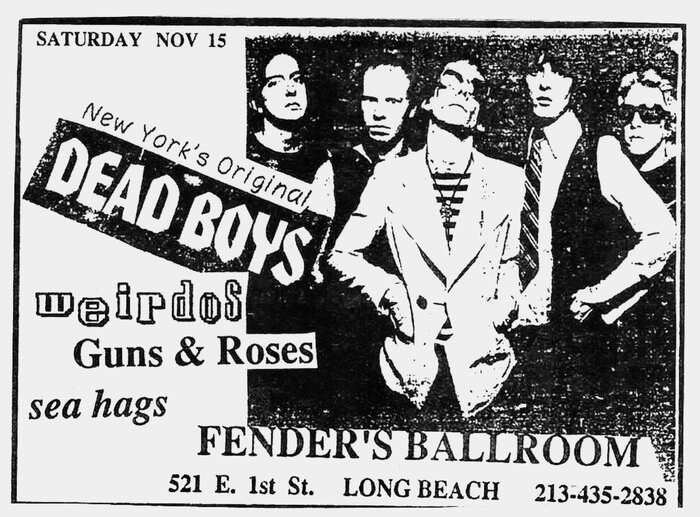
“Kirk Hammett was a pleasure to work with, and he contributed an amazing guitar solo. He was a real gentleman.”
While we’re in Sea Hags territory, the Kirk Hammett story is a great rock ’n’ roll history nugget. He co-produced your first demo and even played on a couple of tracks. What was working with him like? Did he have a specific sonic vision for the band? What stands out most about that time?
Kirk Hammett was hanging out a bit with our singer-guitarist, Ron Yocom, and he came into the studio to produce and play on a song of ours called ‘Love Kills.’ We had been at CD Studios before, so this was actually our third or fourth time there. We did two tracks, ‘Love Kills’ and ‘Walkin’ the Cat.’
I wasn’t much into the metal scene, but there was a little crossover since the Sea Hags performed on a diverse variety of bills. During this time, the four members of Metallica came to see us perform after they were done with their big show across town. James and Lars came to my place afterwards and stayed very late. I met Cliff Burton backstage at Club Lingerie in Hollywood. Kirk Hammett was a pleasure to work with, and he contributed an amazing guitar solo. He was a real gentleman.
Your drumming is credited with helping the band move from “proto-grunge” to a faster, more metallic sound. Do you remember that shift happening? Was it a conscious decision or something that just evolved naturally from playing shows with bands like Dead Kennedys and Motörhead?
As I recall, the Sea Hags’ songwriting developed with Ron and Chris (Schlosshardt, bassist, died 1991) getting together in the afternoon and working out ideas. I would join them in the evening for practice, and by the end of the night we would have a new song. Ideas flowed freely and we would all take part. I don’t think we evolved too much with changing our sound during my time with the band. Really, we all brought our influences together, and groups we played with had little to do with the way our songs took shape.
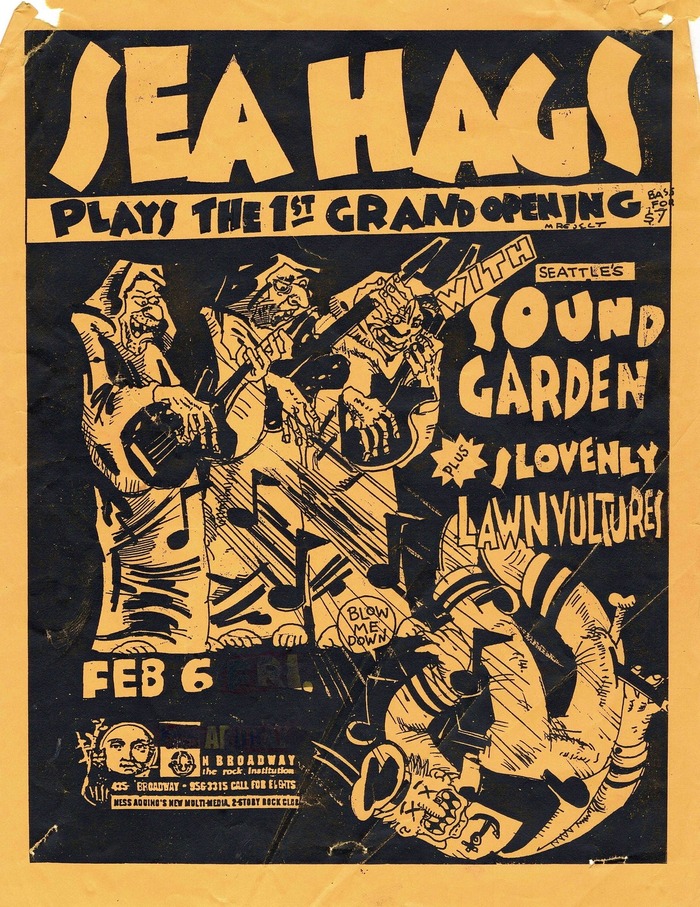
Sea Hags played a lot of shows. Are there any that really stick out, whether it was a packed club or a big support slot, that perfectly captured the Sea Hags’ energy?
Not really, but after a few months of playing together, we did get really tight. So, for most of our time together, we were consistently good. I loved the big shows. Opening for The Cramps, Motörhead, Redd Kross, Ramones… the list goes on and on…
Fast forward to now, you’re juggling drums in No Alternative, Los Microwaves/Microwave Buddha, and The Mutants. Three very different bands with their own histories and sounds. How do you keep all that balanced? And what keeps you fired up about drumming and making music after all these years?
I think what makes life interesting is diversity. I have been fortunate to play drums with so many talented people. No Alternative was a punk band that I joined in 1980, and that I still play with today. During my time with them, they went from straight-ahead punk to incorporating rockabilly, early rock ’n’ roll, and swamp blues influences. We are working on new music now, while also revisiting a few of our punk classics. Los Microwaves/Microwave Buddha was another early SF group, but very different. Keyboard/synth-based and lots of fun. I started out playing with Tuxedomoon, so performing with this group is like revisiting a part of my musical past.
I also drum for Savage Resurrection, a garage/psychedelic band that had an LP out on Mercury Records in 1968. I love that era of music and playing with them is an honor. We only perform live infrequently.
I’ve also done a few shows backing Connie Champagne, a country artist! So, I guess that’s about five groups now, plus the occasional reunion of other bands. It can be tricky juggling all of this on my schedule.
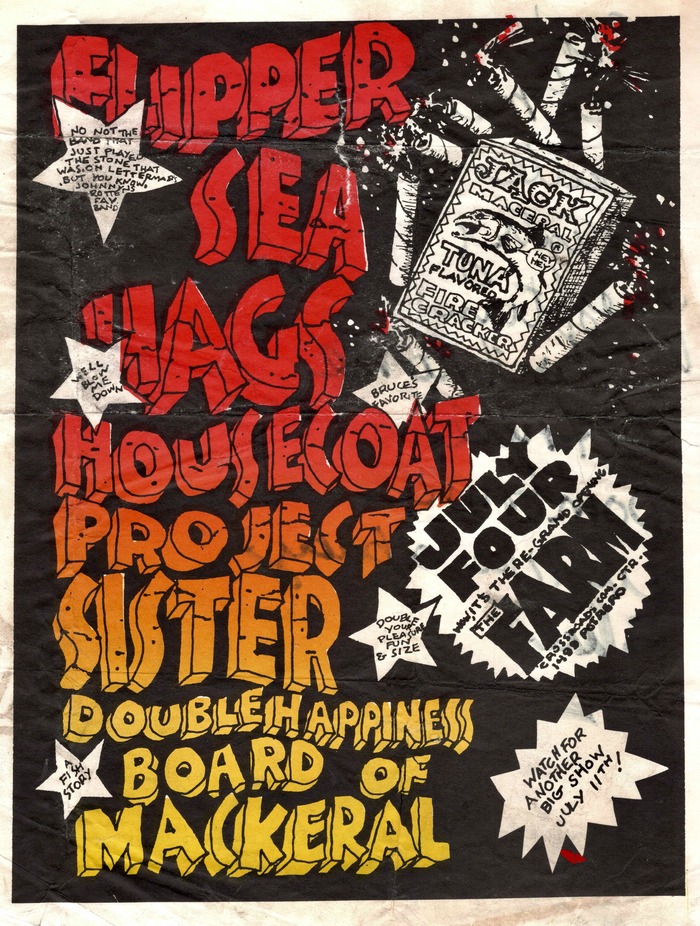
You’ve been a fixture in the Bay Area scene for decades. How has the scene itself changed over time? Do you consciously adapt to what’s current, or just do your thing and let the trends come and go?
I’m seeing smaller audiences at shows. People are picking and choosing what they attend. I think it has to do with a number of factors, but there is a wealth of talent out there. For bigger shows, high ticket prices keep some people from attending. We also have so many choices for entertainment in our free time than we did in the past. TV and movie choices are endless. Video and computer games. The internet. Most of these options didn’t exist when I started performing.
I prefer to play with musicians that are around my age. Like myself, they have taken years to develop their talents. However, the audiences have grown older too, and don’t get out as much.
I have always played the music I wanted to play, and I don’t follow current trends. I get the most satisfaction when I know that whatever band I’m with is making an impression on the audience.
The liner notes for ‘Dead & Gone’ are by Bill Kopp, who’s also written about 415 Records. You were part of that world with The Next and Tuxedomoon. What stands out in your memory about the 415 Records days? How big a role do you think the label played in shaping the San Francisco punk/new wave sound?
Really, it was just a natural progression, and when the opportunity arose, I took it. I’m thinking of my time with The Renegades. After I left, they changed their name to Wire Train and recorded for 415. I wasn’t a good fit for that band, having come out of the punk scene. I preferred to play music that was more cutting edge. Wire Train did very well, especially on college radio, in the early ’80s.
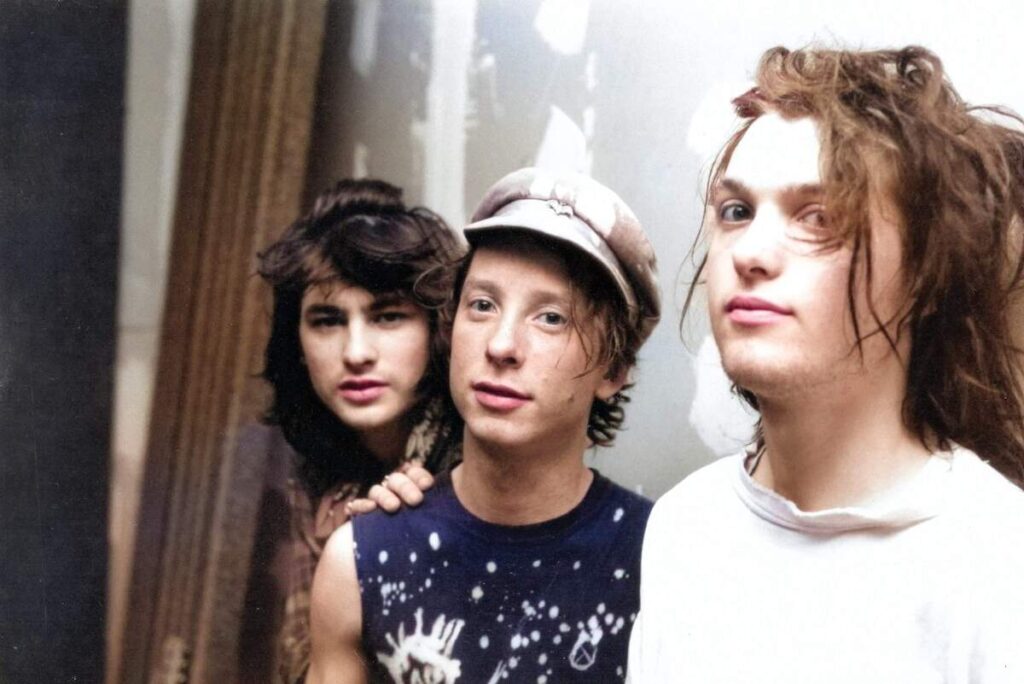
What’s next for you?
I remain active with my music and have a few recordings coming out soon. The Sea Hags’ ‘Dead & Gone’ was released on September 12 on Liberation Hall. The Sleepers A.D. LP is almost finished, and the No Alternative LP is progressing well. I’m going on tour with Microwave Buddha this fall, and hope to record with them as well.
Thanks for inviting me to do this interview. I really enjoyed it.
Klemen Breznikar
Headline photo: Sea Hags (Credit: Fast Mike Haggard)
Liberation Hall Official Website / Facebook / Instagram / Bandcamp
